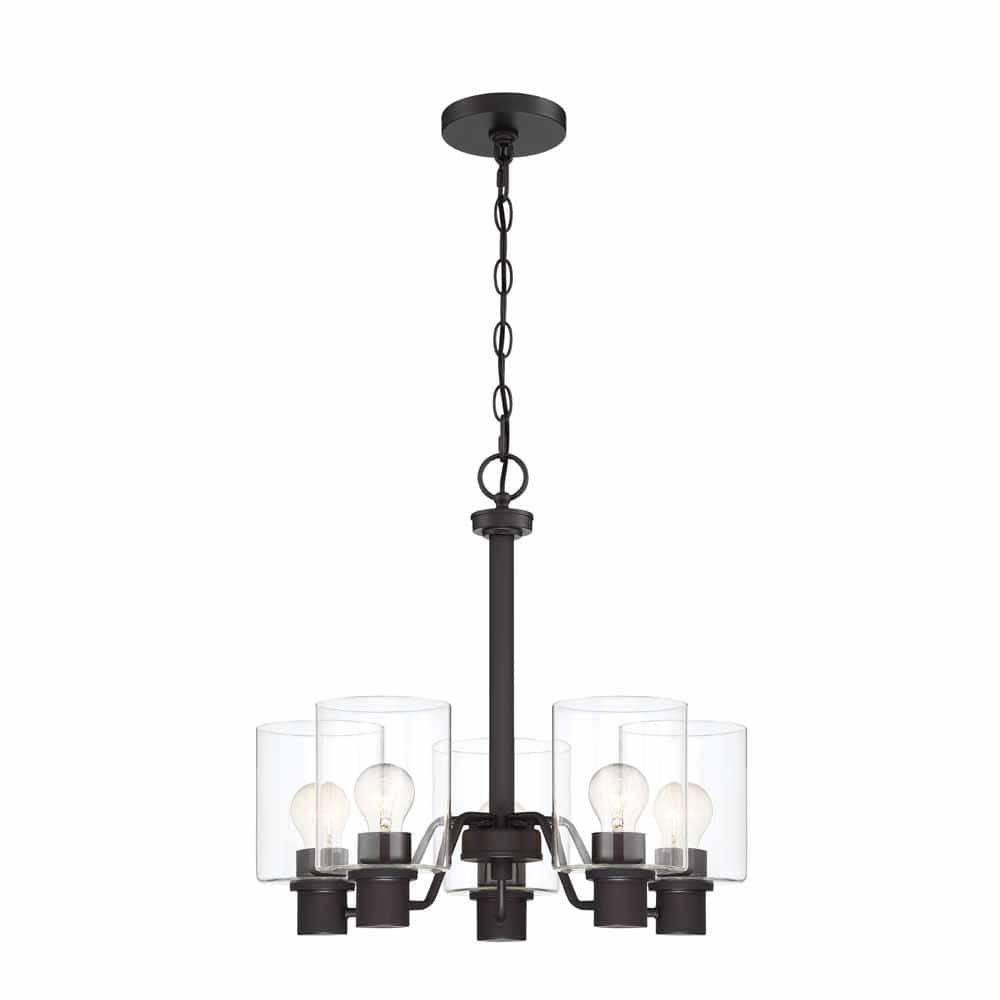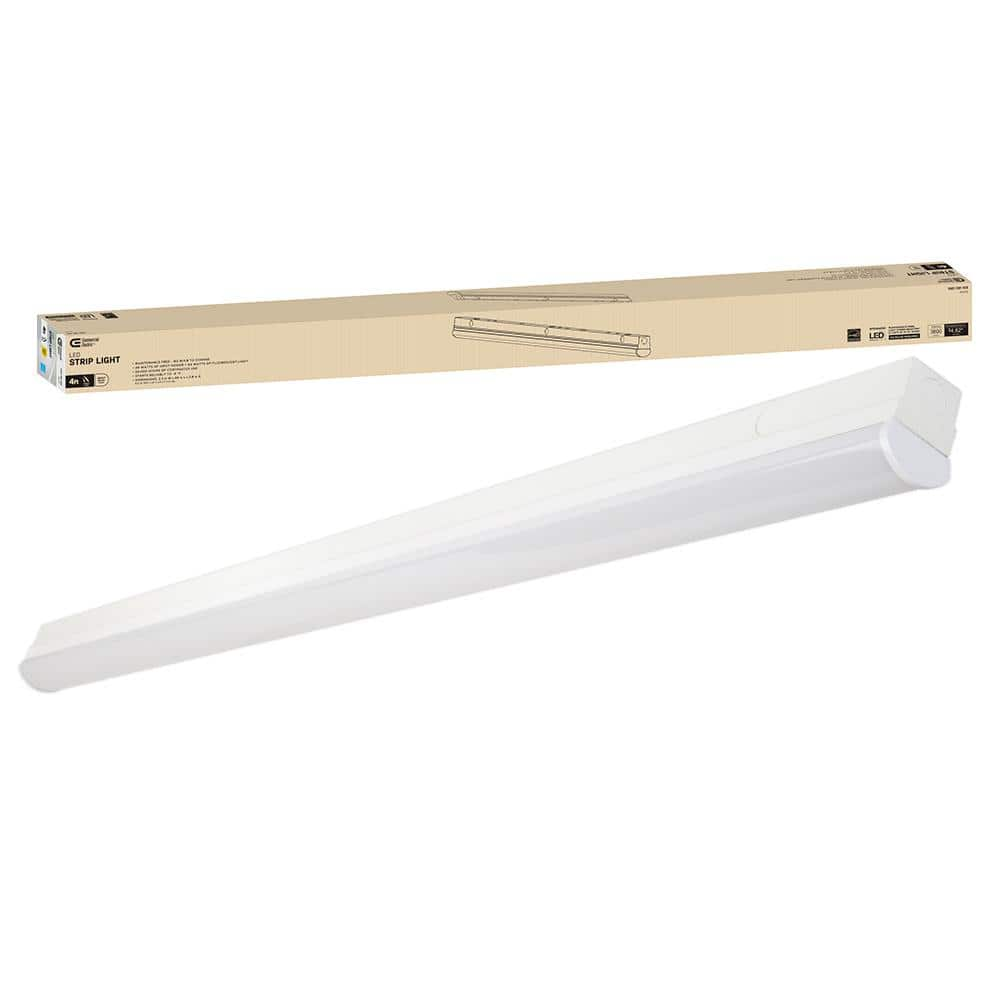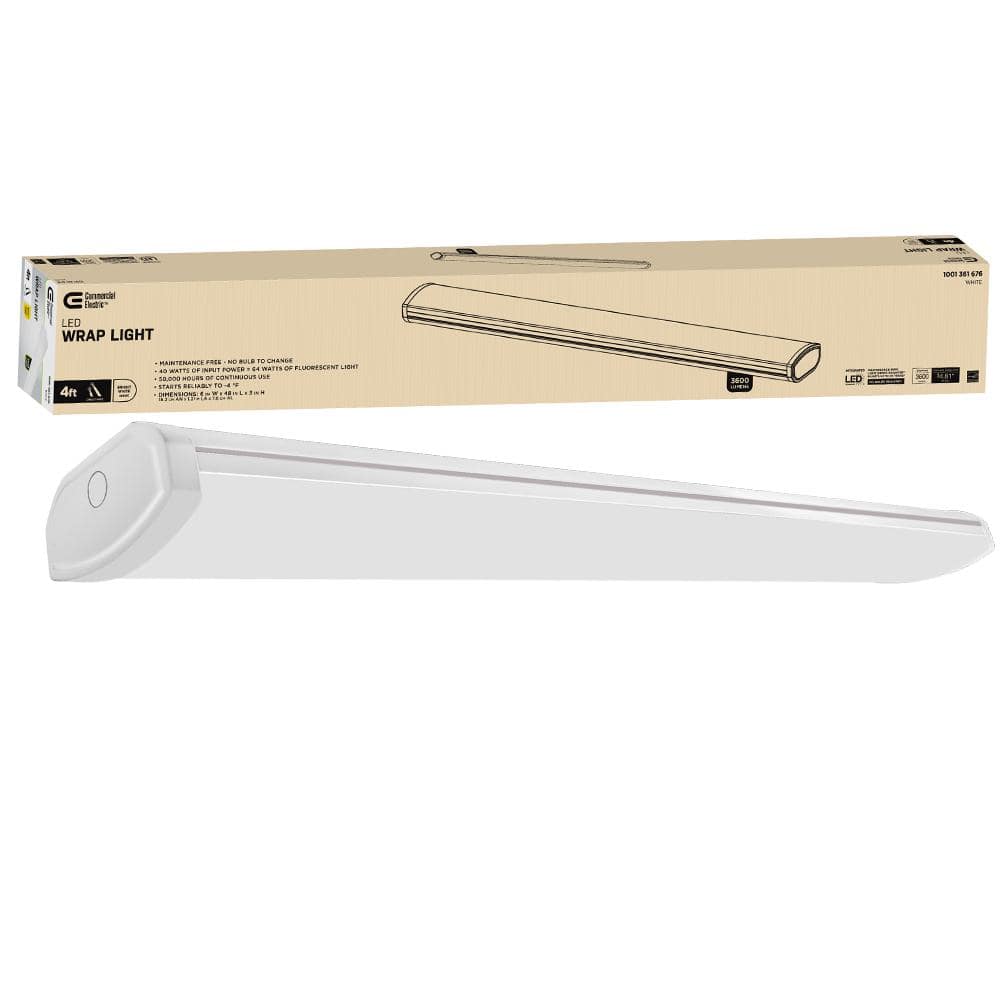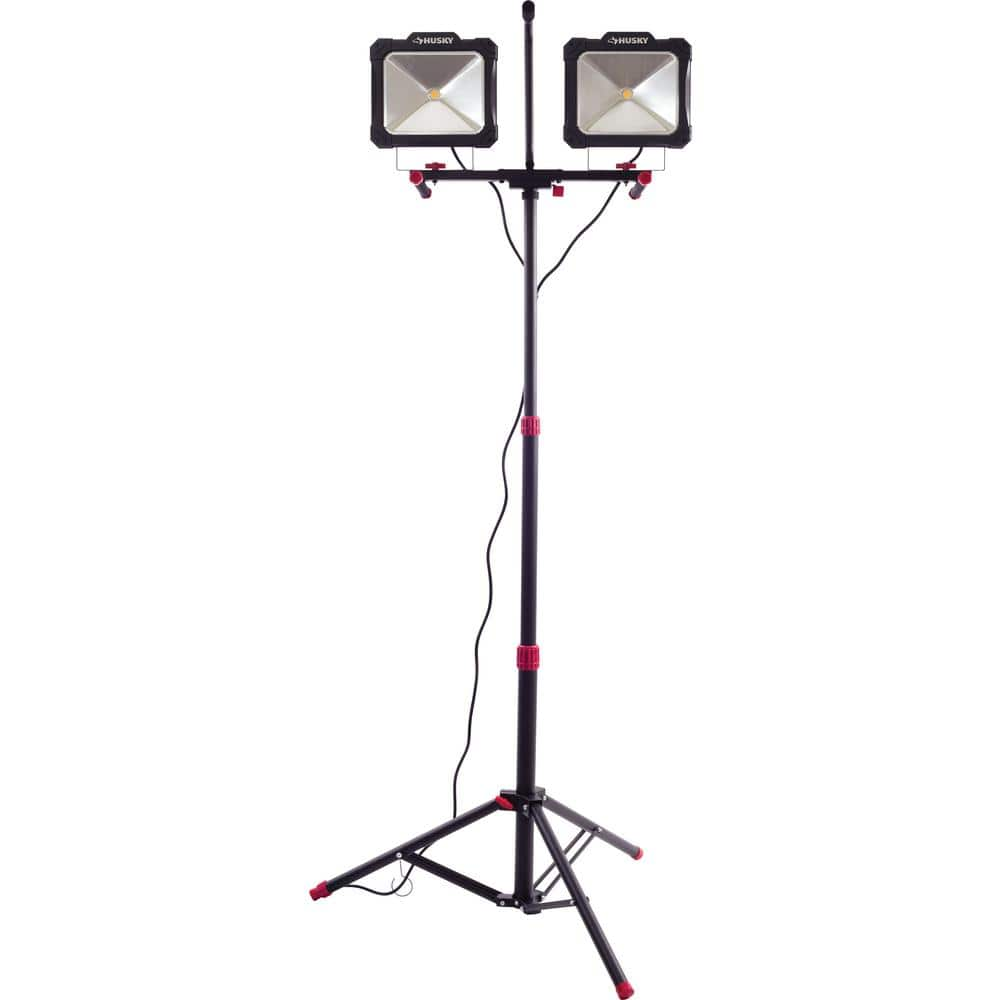Hampton Bay Castleford 5-Light Satin Bronze Chandelier with Clear Glass Shades
Uses (5) Standard 60-Watt Medium Base Bulbs (Not Included). Fully Adjustable Hanging Height (Max. Height 60 in.). Fully dimmable, all mounting hardware included.
This Hampton Bay 5-light chandelier is beautifully crafted in a basic vintage industrial look. The protective satin bronze finish will provide a great design touch to any room. It has clear glass shades to provide pure illumination and show off decorative lamps. This timeless classic design is the choice of discriminating yet value conscious homeowners who want to enrich their home.
- Durable steel construction with satin bronze finish gives a sophisticated look
- Adjustable chain with a maximum hanging height at 60 in.
- Compatible with a standard wall dimmer
- Uses three 60-Watt medium based bulbs or CFL equivalent (not included)
- Clear glass shades
- Hardware included for ease of installation
- Sloped ceiling adaptable
Additional information
| Chain Length (in.) | 36 |
|---|---|
| Fixture Depth (in.) | 20 |
| Fixture Height (in.) | 19 |
| Fixture Weight (lb.) | 9.46 |
| Fixture Width (in.) | 20 |
| Maximum Hanging Length (in.) | 60 |
| Mounting Deck Height (in.) | 1 |
| Mounting Deck Width (in.) | 5 |
| Certifications and Listings | UL Certified |
| Manufacturer Warranty | 3 Year |






by Hillary
Very very nice! Everybody like it in my hise!
by Lisa
Very nice and elegant looking lighting. Must use low wattage bulbs due to the clear glass.
by Howie
Easy enough to install and well packaged. Lights are a little crooked. Pay for what ya get, I guess.
by Steven
Lights of excellent quality and design.